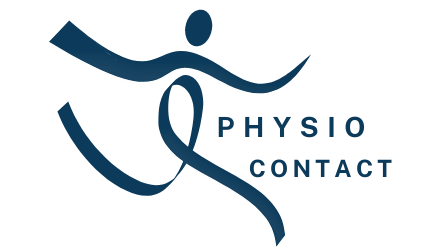As a physiotherapist, I understand the importance of providing patients with customized treatment plans that cater to their specific needs.
There are various types of physiotherapy treatments available, each designed to address different conditions and injuries.
In this article, we will explore some of these treatments and how they can help you achieve freedom from pain and discomfort.
Whether you have suffered an injury or have been living with chronic pain for years, physiotherapy can be an effective way to manage your symptoms and improve your overall quality of life.
From manual therapy techniques such as massage and joint mobilization to exercises that target specific muscle groups, there are numerous options when it comes to physiotherapy treatments.
By working closely with your therapist and following a personalized plan, you can regain control over your body and experience greater levels of physical freedom than ever before.
Manual Therapy Techniques
Manual therapy techniques are a widely used physiotherapy treatment that can bring several benefits to patients. These techniques involve the use of hands-on manipulation and mobilization of muscles, joints, and soft tissues to alleviate pain, improve range of motion, and restore function.
The most significant advantage of manual therapy is its ability to target specific areas of tension or restriction in the body with precision and control. This allows for a more personalized approach to care that can lead to faster recovery times and better overall outcomes.
However, it’s essential to note that there are certain situations where manual therapy may not be appropriate. For instance, if you have an acute injury or inflammation in the affected area, manual therapy could cause further damage. Additionally, some medical conditions like osteoporosis or cancer may make manual therapy too risky for the patient.
It’s crucial to discuss your condition thoroughly with your physiotherapist before undergoing any form of manual therapy treatment to ensure that it’s safe and effective for you.
Exercise-Based Treatments
After receiving manual therapy techniques, it is important to continue with exercise-based treatments in order to achieve maximum benefits.
Exercise-based physiotherapy has numerous advantages such as improving flexibility and range of motion, reducing pain and stiffness, increasing strength and endurance, and overall improvement of physical function.
To incorporate exercise into your daily routine, start by setting small goals that can be easily achieved and gradually increase the intensity and duration of your workouts.
It’s important to choose exercises that target specific areas of concern or weakness identified during assessment with your physiotherapist.
In addition, try incorporating activities that you enjoy so that exercising becomes more enjoyable rather than a chore.
Lastly, make sure to listen to your body and take breaks when necessary to avoid overexertion or injury.
With consistent effort and dedication towards an exercise-based treatment plan tailored to your individual needs, the benefits will undoubtedly follow.
Electrotherapy
Electrotherapy is a type of physiotherapy that uses electrical energy to treat muscle pain, spasms, and inflammation. It works by sending small electrical currents through the skin and deep into the tissue to stimulate nerves and muscles.
The benefits of electrotherapy are numerous, such as improved circulation, reduced swelling, increased range of motion and flexibility, decreased pain sensation, and faster healing time. However, just like any other form of treatment, electrotherapy has its side effects.
Some people may experience skin irritation or burns at the site where electrodes were placed; others might feel dizzy or nauseous during or after the session. These adverse reactions are rare but possible and should be reported immediately to your therapist.
Overall, electrotherapy can be an effective way to manage acute or chronic pain without medication dependency or invasive procedures. If you’re interested in trying this modality out for yourself, talk to your physiotherapist about whether it’s right for you!
Hydrotherapy
Hydrotherapy is a type of physiotherapy that involves the use of water to treat various conditions. This treatment has been popular for centuries due to its numerous benefits, including pain relief, improved circulation, and reduced inflammation.
Popular hydrotherapy techniques include hot and cold therapy, underwater exercises, and whirlpool baths. The warm temperature of the water helps relax muscles while also increasing blood flow to injured areas. Cold therapy can help reduce swelling by constricting blood vessels and decreasing metabolic activity around an injury site. Underwater exercises are particularly useful for weight-bearing patients as it reduces stress on their joints. Whirlpool baths provide all-over body relaxation while also promoting healing through increased circulation.
As a physiotherapist, I recommend hydrotherapy treatments because they can be tailored to each patient’s individual needs while providing both physical and mental benefits in a calming environment.
Acupuncture And Dry Needling
If you’re looking for a physiotherapy treatment that involves the use of needles, acupuncture and dry needling are two options to consider. While they both involve the insertion of thin needles into specific points on your body, there are some differences between the two techniques.
Acupuncture is an ancient Chinese practice that aims to balance the flow of energy in your body, whereas dry needling focuses on releasing trigger points in your muscles.
When deciding which technique to try, it’s important to weigh the benefits and risks associated with each. Here are five things to keep in mind when considering acupuncture or dry needling:
- Both treatments can help relieve pain and tension
- Acupuncture has been shown to be effective for a wider range of conditions than dry needling
- Dry needling may be more targeted and precise than acupuncture
- There is a small risk of infection or other complications with either technique
- It’s important to find a qualified practitioner who uses sterile needles
Ultimately, whether you choose acupuncture or dry needling will depend on your individual needs and preferences. If you have any concerns about trying these treatments, don’t hesitate to talk to your physiotherapist about them. They can help you make an informed decision based on your unique situation.
Conclusion
As a physiotherapist, I believe it’s important to understand the different types of treatments available for patients.
Manual therapy techniques such as joint mobilization and soft tissue massage can be effective in reducing pain and improving range of motion.
Exercise-based treatments are also crucial in restoring function and preventing future injuries.
Electrotherapy, including ultrasound and TENS machines, can help reduce swelling and promote healing.
Hydrotherapy is another option that involves using water to aid in muscle relaxation and improve circulation.
And lastly, acupuncture and dry needling have been shown to alleviate pain by releasing tension in trigger points.
It’s essential for patients to work with their physiotherapist to determine which treatment approach is best suited for them based on their individual needs.
Our goal as healthcare professionals is to provide personalized care that promotes recovery and improves quality of life.
With the right combination of therapies, we can help our patients achieve optimal health outcomes.











